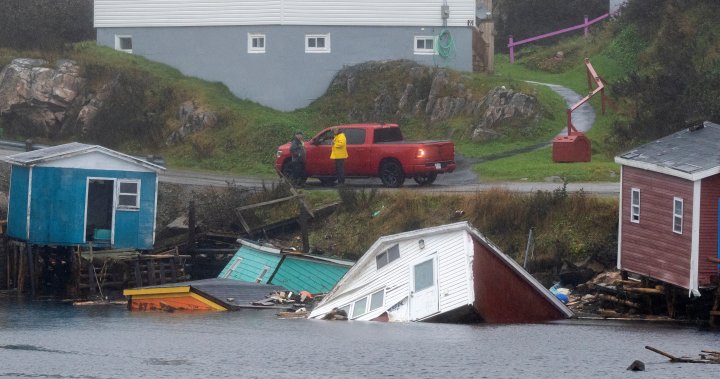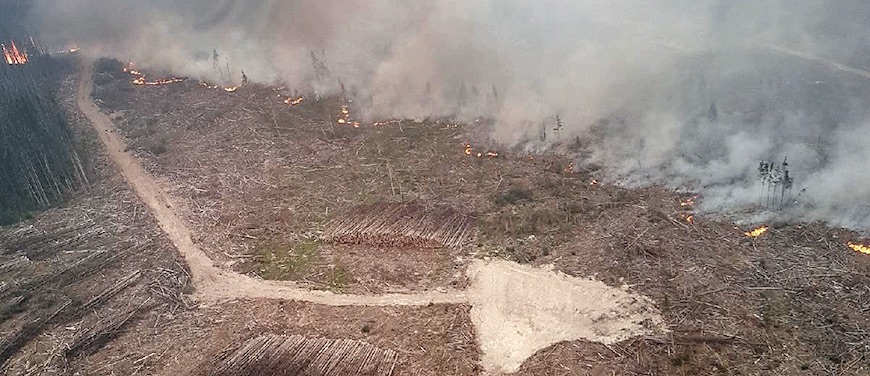Is there hope for Alberta?
Freeland's speech in Washington may not have been a one off.
The Liberal Organ signs off on hydrocarbons.
What if Canada could have a bigger oil and gas industry, and lower emissions? It’s possible
THE EDITORIAL BOARD
PUBLISHED 13 HOURS AGOUPDATED 50 MINUTES AGO
The Suncor tar sands processing plant near the Athabasca River at their mining operations near Fort McMurray, Alta.TODD KOROL/REUTERS
50 COMMENTS
SHARE
BOOKMARK
LISTEN TO ARTICLE
There’s a big difference between promise and action.
Last Friday, Canada’s oil sands companies started to bridge that chasm, moving from a vague pledge to reach net-zero emissions to
a $24.1-billion plan to get a third of the way to the goal by 2030.
A brief history: The oil sands of northeastern Alberta had long held a visible bounty of crude. But it wasn’t until the 1960s and 1970s that the riddle of turning bitumen into usable oil was solved, in part with significant support from governments. The region remained a fringe part of the oil business until the 2000s, when a boom took off, again in part propelled by government support. It made Canada into the world’s fourth-largest oil producer.
Transforming bitumen into oil, however, takes energy. Using fossil fuels to make fossil fuels, along with everything else involved in the process, produces lots of greenhouse gas emissions.
Last year, the
oil sands companies said they could achieve net-zero emissions by 2050, and drew up
a conceptual road map, starting with cutting emissions by a third by 2030. But as the months passed, with no details or spending plans, this page and others wondered about what was happening – or rather
not happening. In February,
we urged industry to invest some of its windfall profits and get more ambitious.
Friday
marked a big step – $24.1-billion, two-thirds of it going to carbon capture and storage, and the rest to other projects. Of the $16.5-billion budgeted for carbon capture, taxpayers will foot almost half the bill, with subsidies of $7.1-billion through to 2030 outlined in Ottawa’s April budget.
The long history of the oil sands is important because it illustrates the shared role of industry and governments in unlocking a massive resource. On emissions, it had so far been Ottawa out in front. Now, industry has shown up.
Also important is a shift in rhetoric, from both industry and Ottawa. “Our perspective is, ‘Watch us now,’” said Kendall Dilling, head of Pathways Alliance, the coalition of oil sands companies. “We have made that fundamental mindset shift that our future is a carbon-free production of our product.”
This is key. There is a global demand for Canadian oil and natural gas, and this country will be producing both for years to come. Canadians receive enormous economic benefits from the fact this country is a major producer, and so do our allies. Canada needs to cut emissions across the economy, and the oil and gas industry has to lead, significantly and steadily reducing its emissions. But forcing an artificial cut in production of Canadian oil and gas, when global demand exists, is not the way to get there. The void would be filled by OPEC, Moscow and others. It would leave us poorer and weaker, and would benefit neither us nor our allies.
The future of oil and gas has polarized Canadian politics. The left demonizes crude, the right lionizes it, and both sides miss the point. Conservatives don’t much like talking about climate change or emissions reductions. And t
he Liberal government – despite investing $26-billion in buying and expanding the Trans Mountain oil pipeline – doesn’t much like talking about how vital oil and gas are to Canada, or how important the resource is for the democratic world.
But some Liberal tongues have suddenly loosened.
Deputy Prime Minister Chrystia Freeland, in a speech last week in Washington, said Canada needs to focus on “fast-tracking” energy and mining projects that “our allies need to heat their homes and to manufacture electric vehicles.” Foreign Minister Mélanie Joly, in South Korea and Japan last week, celebrated the fact that Canada is set to become a major supplier of natural gas to those countries, once the big LNG Canada export facility opens in 2025, on British Columbia’s northwest coast. Ms. Joly went on to say: “There is a lot of interest for all of us to go even further.” As in possibly more projects, exporting more Canadian gas. The first phase of LNG Canada would see more than 10 per cent of this country’s natural gas shipped to Asia, where it could help ease reliance on coal power. A second phase would double that volume – and that second phase, with new technology, could be the world’s lowest-emissions LNG.
All of which is, just maybe, a sign of industry and Ottawa starting to sing in harmony – with Ottawa less reluctant to talk about the importance of oil and gas to our prosperity and security, and industry acknowledging how much work it has to do to cut, cut and further cut emissions.
Ottawa and oil sands companies are starting to sing in harmony, in recognizing how much work industry has to do to cut emissions and Ottawa becoming more open to the importance of oil and gas to our prosperity and security

www.theglobeandmail.com








:format(jpeg)/cloudfront-us-east-1.images.arcpublishing.com/tgam/MPGH4LELIJIC7D4SKH4ELSTHHA.JPG)
/cloudfront-us-east-1.images.arcpublishing.com/tgam/MPGH4LELIJIC7D4SKH4ELSTHHA.JPG)

